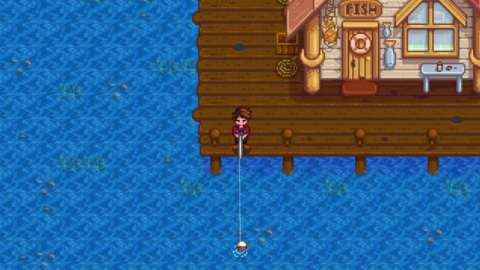You might have heard about a game called Wingspan, which went from being acclaimed in the hobby space to selling a massive million-plus copies in retail. It did so not only by being a fun board game but thanks to its accessible and appealing theme where players manage a bird sanctuary. It was not without its critics, particularly over its slightly repetitive structure, and those concerns have fed into the design of a more complex re-skin, Wyrmspan, where players represent mighty dragon wranglers in a fantasy setting.
What’s in the Box

The original game was famous for its high production values--that’s another key plank of its wide appeal--and while Wyrmspan isn’t quite as pretty, it doesn’t disappoint in that department either. It has a collection of multicolored, speckled resin eggs just like its predecessor, a slew of punch out cardboard resource tokens and two neat plastic storage boxes to keep them in. The coins are cardboard but are silvered, which is a lovely touch.
Players each get a selection of wooden cubes and an adventurer piece in their color, along with one of five boards to track their growing menagerie of dragons, which is where most of the game state will get tracked. There are three other shared boards, one to track the round and its associated bonuses, another is a dragon guild board with four different bonus tiles to sit in the middle, and the final one organizes the dragon and cave decks.
The dragon deck is enormous--almost 200 cards--each with its own distinctive art. While the dragons are impressive, it’s not on a par with the luminous illustrations of real-world birds in Wingspan. And the graphic design generally verges on the bland, with most of the boards being empty space printed with generic fantasy-style fonts. Not that that matters so much once they’re covered in face-up dragons.
Rules and How It Plays

If you’re familiar with Wingspan you’ll already have a good grasp on how to play Wyrmspan--there’s a boxout in the rules that should make learning it a cinch--but there are some key differences. Players start each of four rounds with six coins, and each of the game’s three actions--excavate, entice and explore--costs a coin to perform. Sometimes an action will cost an additional coin or give you a coin back, so the number of actions you can take each turn varies.
Excavate lets you play cave cards from your hand into one of three different dragon habitats on your player board. You’ll need to have a cave card to get dragons into anything other than the initial slot, and playing a card also nets you a bonus printed on the card, such as additional resources or card draws. Entice allows you to play a dragon from your hand into an empty cave. This will cost you resources like meat and gold, printed on the dragon’s card, in addition to the coin. Dragons are a major source of victory points, and most have other printed effects.

Some dragons have an ability when played, others at the end of a round, but for most you’ll need the third action type, Explore, to get the most out of them. This is the most complex action, in which you send your little adventurer meeple into any inhabited caves, gaining benefits depending on which habitat you’re exploring and what dragons you’ve got played there. The Crimson Cavern will let you get food resources to spend on dragons, while the Golden Grotto and Amethyst Abyss will net you cave and dragon cards, respectively, from a face-up selection. The more dragons in a given habitat, the deeper you can go and the better the rewards will be.
You’re thus immediately caught in a classic board game dilemma: you need food and cave cards to play dragons, but without dragons, it’s hard to get food and cave cards. There’s nothing for it but to bite the bullet and take some pathetically weak explore actions while you try and build a strategy, but the big question is what aspects are you going to favor, and which can you neglect?
Decisions here will be heavily impacted by what dragon and cave cards you start with. For example, some cave cards give you food tokens, so you might feel you can wait on populating your Crimson Cavern. And this is where the additional complexity of Wyrmspan begins to bear fruit over its predecessor. The extra concepts ensure there’s a lot more interplay in effects between the cards in your hand and the actions you can take, ensuring there’s more strategy and tactics in your choices.

Perhaps the most notable of these new features is the dragon guild board. You can earn moves on this board in various ways, and each earns you a small bonus from the space you land on. However, for each half-cycle you get to pick a larger bonus from the tile in the middle, many of which include big end-game scoring bonuses. The rewards you get here are substantial enough to build a strategy around, and with four different middle tiles together with that colossal stack of dragon cards there’s a ton of variety to explore during repeat plays.
Other particularly noteworthy changes include the removal of the random food roll of Wingspan in favor of a free choice of food resources and the swapping out of action cubes for the coins resource. While the latter might sound like a small change it has a big impact, because now cards can earn or cost you coins, changing the amount of actions you can take in a turn, which you have to factor into your planning. It even introduces a bigger element of timing into the game, as if you have more or less actions than other players it will change the urgency with which you feel you might have to take things from the shared boards, like the selection of face-up dragons and caves.
Hatchlings, a specific subtype of dragon card, add to this sense of time-based pressure. They can be awkward to put into play because they require milk, a resource that’s otherwise largely useless. But once on your player mat, each visit from an adventurer yields a bonus until the third, which offers an extra-impressive benefit. This imparts a real sense of urgency to try and get these whelps played, to make sure you’ve got time for enough visits to trigger the bonus and enjoy its effects.

However, timing your plays effectively to get what you need before others do is about the only level of player interaction you’ll find in the game. For most of it, you’ll be preoccupied with building your own dragon-powered game engine, not caring what your opponents are doing. Thankfully, this is a fully absorbing task on its own, thanks to all the different ways in which card effects overlap, and the sheer amount of in-game variety takes up some of the slack left by the lack of in-game interaction.









